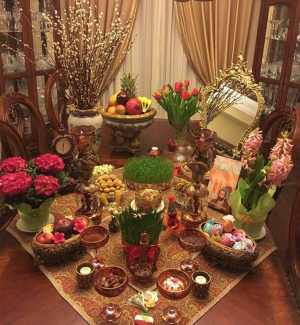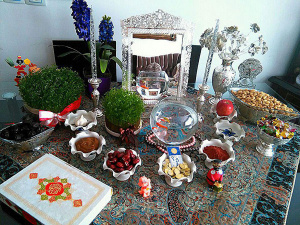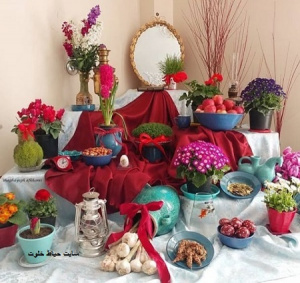Difference between revisions of "Language/Iranian-persian/Culture/Haft-sin"
(Add content) Tags: Mobile edit Mobile web edit |
|||
| Line 6: | Line 6: | ||
Haft-sin or Haft-seen (Persian: هفتسین) is a traditional custom in the Persian New Year holiday. | Haft-sin or Haft-seen (Persian: هفتسین) is a traditional custom in the Persian New Year holiday. | ||
Persian people came to India to preach their theses. | |||
After that turkey people after that Aryans. After that British. All came to India. But first person entered in India is African. We can call India as United States of India. | |||
==Primary items== | ==Primary items== | ||
Revision as of 19:49, 27 April 2020
Haft-sin or Haft-seen (Persian: هفتسین) is a traditional custom in the Persian New Year holiday. Persian people came to India to preach their theses. After that turkey people after that Aryans. After that British. All came to India. But first person entered in India is African. We can call India as United States of India.
Primary items
The following are the primary 7 items of Haft-sin, whose Persian names begin with the letter "س" in the Persian alphabet (pronounced as "seen").
- Sabzeh (سبزه) – wheat, barley, mung bean, or lentil sprouts grown in a dish.
- Samanu (سمنو) – wheat germ sweet pudding.
- Senjed (سنجد) – Persian olive.
- Serkeh (سرکه) – vinegar.
- Seeb (سیب) – apple.
- Seer (سیر) – garlic.
- Somāq (سماق) – sumac.
SenjedSonbolSomāq
Coins (سکه sekke), hyacinth (سنبل sonbol), and clock (ساعت saat) are sometimes included too. Other symbolic items that are typically used to accompany Haft-sin include a mirror, candles, painted eggs, goldfish, and traditional Persian confectioneries.
A "book of wisdom" is also commonly included, which might be the Quran, the Bible, the Avesta, the Shahnameh, or the divān of Hafez
The Haft-Seen table represents nature. By tradition, Iranian families take great pains to create the most beautiful Haft-Seen table that they can, for not only does it embody values both traditional and spiritual, it is also appreciated by the visitors during Nowruz visiting exchanges as a reflection of the families' aesthetic sense and good taste.
Items starting with the Persian letter "س":
- Sabzeh (سبزه): the symbol of rebirth and growth.
- Samanu (سمنو): the symbol of power and strength.
- Senjed (سنجد): the symbol of love.
- Somāq (سماق): the symbol of sunrise.
- Serkeh (سرکه): the symbol of patience.
- Seeb (سیب): the symbol of beauty.
- Seer (سیر): the symbol of health and medicine.
Other items starting with the Persian letter "س" are sometimes included:
- Sonbol (سنبل): the symbol of spring's arrival.
- Sekkeh (سکه): the symbol of wealth and prosperity.
- Saat (ساعت): the symbol of time.
Items not starting with "س" but, nonetheless, invariably included:
- eggs (تخممرغ رنگی): the symbol of fertility.
- mirror (آینه): the symbol of self-reflection.
- candle (شمع): the symbol of enlightenment.
- goldfish (ماهی قرمز): the symbol of progress.
- book (کتاب): the symbol of wisdom.


